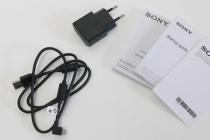In amateur radio practice, it is sometimes necessary to have a signal generator of a given shape and frequency at hand to check and test radio equipment nodes. With the increasing availability of microcontrollers, it is possible to assemble a digital signal generator in which any signal would be generated by software.
Digital signal generator "Nyx" (Nikta). Specifications:
The sampling rate is 131072 Hz.
The range of generated frequencies is 1 - 65536 Hz, with a tuning step of 1 Hz.
A 32-bit accumulator which theoretically allows a resolution of 0.000030518 Hz.
8 bit output, voltage swing from -15V to + 15V.
The generator is built on the basis of an atmel ATMEGA16 microcontroller, an R-2R network was used as a DAC, the output of which was passed through operational amplifiers, which made it possible to regulate the amplitude of the generated signal and its offset relative to the ground.
The software was written in C, with assembly in assembly. The generator works on the principle of direct digital synthesis. You can read in detail the theoretical material on the problems of digital signal synthesis by following the links at the end of the original page. The program is structured as follows. An array of 256 elements is allocated in the MC RAM, which stores the value of the generated signal in the amount of one period. The array of values is filled before the start of the synthesis, depending on which signal is to be obtained at the output. It is this mechanism that allows you to describe the generated signal by a formula, and not manually fill it with a table, as is done in other designs. After starting the generator 131072 times per second, an interrupt starts triggered, in which the accumulator value is incremented, the first 8 bits are cut off from the variable value, and the corresponding array element is called. The whole process takes 113 microcontroller clock cycles.
Unlike analogs, the frequency is set from the digital keyboard, and not using the "+" and "-" buttons, which increases the speed of using the generator. Be sure to think over the device control interface. How many body movements are required to set the frequency to 32698 Hz? It's a good idea to use an encoder.
If only a sine wave is required at the output, then it is a good idea to install a low-pass filter that would cut off noise at the harmonics of the sampling rate. But this is unacceptable if the signal generator has a square-wave signal at the output - the filter will fill up the edges.
Despite the fact that according to the Kotelnikov (Nyquist) theorem, for reconstruction with a frequency f, it is necessary to produce samples (sampling) with a frequency of 2f, the reconstructed signal will have shape distortions. Thus, even though the limiting recoverable frequency is 65536 Hz, the ceiling is actually about 20,000 Hz. At high frequencies, the signal waveform will not resemble a sinusoid at all, so take this feature into account when setting up the circuits.
The keyboard is an incomplete 4 * 4 matrix that is sampled dynamically. LCD screen WH1602. Industrial instrument case, purchased from IEC. The windows were cut with a dremel.
What would be nice to do:
1) Implement software or hardware PWM, which will allow the generator to be used to control the power supplied to the load.
2) Output a separate high-frequency square-wave signal generated by hardware timers on the MK (frequencies of the order of megahertz)
The original of the article (as usual, it will probably fall)
A two-channel virtual digital arbitrary waveform generator is a 12-bit digital device in the standard design of the AKTAKOM USB-laboratory series, and generates an arbitrary waveform or one of the standard waveforms (sinusoidal, rectangular, triangular and some others) through two channels simultaneously. The setting of the waveform and parameters of the signals is performed by the user using a computer independently for each of the channels. The device has a common external synchronization input for both channels to trigger generation on an external event. The signal generator also provides an output signal to synchronize the triggering of other instruments.
Signal Generator Specifications
| General characteristics | |
|---|---|
| Number of output channels | 2 |
| Output waveform | arbitrary or standard |
| Shape selection for both channels | independent |
| DAC | 12 bit |
| Maximum points per channel | 128 C |
| Switchable low-pass filter | 15 MHz |
| Maximum sampling rate | 80 MHz |
| Frequency bandwidth at 1% | 0 ... 10 MHz |
| Maximum Output Peak to Peak Level: without additional amplifier with additional amplifier (only for АНР-3122) |
± 2.5 V into 50 ohm load ± 20 V into 50 Ohm load |
| Output voltage step | no more than 2.5 mV; 10 mV with amplifier |
| The limits of the vertical shift of the signal | ± 2.5V |
| Front duration of a square wave | no more than 20 ns |
| Sampling frequency | selectable from 2.44 kHz to 80 MHz |
| Error | no more than 10 -6 of the output frequency |
| Synchronization | |
| Selecting Timing Modes | |
| restart | single or continuous |
| a source | external or manual (internal) |
| polarity | on a rising or falling edge |
| External sync input | |
| form | rectangular pulse |
| amplitude | TTL level |
| duration | not less than 25 ns |
| Sync output | |
| form | rectangular pulse |
| amplitude | TTL level at 1 kOhm load |
| duration | not less than 25 ns |
| Power and design parameters | |
| Nutrition | 220 V, 50 Hz, no more than 20 W |
| dimensions | 260x210x70 mm |
| Weight | no more than 2.0 kg |
| Relative humidity | no more than 90% at a temperature of 25 ° С |
| Atmosphere pressure | from 495 to 795 mm Hg Art. |
AKTAKOM ARBITRARY GENERATOR SOFTWARE
PURPOSE:
AKTAKOM Arbitrary Generator application is intended for full-featured control of supported instruments, creation, editing and loading of data to generate signals for two channels.
OPPORTUNITIES:
The application provides detection and compilation of a list of signal generator modules available for operation, connected to the computer locally (by USB interface) or via Ethernet / Internet; initialization and testing of the selected device instance.
The application provides control of all the parameters available for configuring this type of equipment (see the description of supported devices) and recording the data defining the waveform to the memory of the signal generator. Waveform data can be specified by the user graphically, in the form of a mathematical formula (there is a built-in formula calculator) or a binary sequence: selected from a list of standard signals (sine, rectangle, triangle, saw, flash, pulse) or be loaded from a previously saved file independently for each channel.
The application also allows you to set the waveform for two channels simultaneously in the form of a parametric curve, i.e. in the form of a two-dimensional Lissajous figure ("Laser Show" function).
The application contains a built-in analysis module for signals prepared for generation. The functions of the analysis module include:
- virtual oscilloscope (shows the shape of the generated signals, taking into account the limitations of the equipment);
- automatic measurement of pulse parameters;
- spectral analysis of signals;
- functions of voltmeter and phase shift meter.
The application allows the user to manually adjust the colors of the graph elements and the line width of the oscillograms or load these settings from the previously saved files of color schemes. The size and position of all windows in the application can also be customized by the user. All program settings can be written to a configuration file and then loaded.
Minimum computer requirements
- USB 1.1 port;
- Installed operating room Windows system XP, Windows 7, Windows 8;
- Video system VGA (640x480 resolution, 256 colors), 800x600 or more recommended, 24-bit color;
- To use sound messages of the program, you need a sound card and an audio system;
- To use all the features of the program, we recommend using a processor of at least Pentium II 400 and at least 32 MB of RAM.
Standard complete set
** The complete guide manual in the standard delivery does not have a physical carrier and can be downloaded from the website after the purchase and registration of the device, indicating its serial number.
- Software
- AAG Aktakom Arbitrary Generator Arbitrary Waveform Generator Software
- AUNLibUSB 1.2.6.0 Driver for Virtual USB Lab Devices
To download the software, click the "Download" button or go to the "" ->
Additional equipment
- BNC cable and
- AHP-3121_SDK Software Complete Software Development Kit
The software in the standard delivery does not have physical media and can be downloaded on the website in the "" section after purchasing and registering the device, indicating its serial number.
To download the software, click the “Download” button or go to the “” -> “” section, then log in by entering your username and password. If you have not registered on the site before, follow the "Register" link and enter all the necessary data.
If you lose the software, download it at an additional cost. The software can be delivered on physical media (CD-ROM). Recording of software on a medium (CD) and its delivery are carried out at an additional cost.
|
A.A. Dedyukhin, JSC "PriST" Signal generators are one of the main tools designed for Maintenance, repair, measurement and research in various fields of science, industry and communications. In recent years, there have been major changes in the approach to the functionality of signal generators. If ten years ago generators could be divided into such groups as synthesizers, noise generators, sinusoidal signal generators, pulse generators, complex signal generators, RF generators, now, due to the rapid growth of digital and microprocessor technology, the development software technologies it became possible to create a new class of generators that would combine all previously existing types of generators. These are multifunctional signal generators with the ability to generate signals of complex and arbitrary waveforms… |
Signal generators are one of the main tools for maintenance, repair, measurement and research in various fields of science, industry and communications. In recent years, there have been major changes in the approach to the functionality of signal generators. If ten years ago generators could be divided into such groups as synthesizers, noise generators, sinusoidal signal generators, pulse generators, complex signal generators, RF generators, now, due to the rapid growth of digital and microprocessor technology, the development of software technologies it became possible to create a new class of generators that would combine all previously existing types of generators. These are multifunctional signal generators with the ability to generate signals of complex and arbitrary shapes. These generators allow you to form not only the so-called "standard waveforms" (sinusoidal, rectangular for which previously there were separate types of generators), but to "standard waveforms", in Lately, already include signals of triangular, sawtooth, pulse waveforms, noise signal and signals of exponential, logarithmic, sin (x) / x, cardioform, constant voltage signal. Built on the basis of digital technologies, modern multifunctional generators, in comparison with their analog ancestors, have a unique frequency resolution - up to 1 μHz, excellent stability and frequency setting error - up to 1 × 10 -6 and a low level of harmonic components for a sinusoidal signal. Consumer requirements for signal generators are constantly increasing in the direction of expanding the frequency range, increasing the number of generated forms, including the ability to simulate arbitrary waveforms, expanding the types of modulations, including digital types of modulations and other auxiliary capabilities.
One of such modern signal generators is the AKIP-3402 signal generator of a special form (see Fig. 1).
|
Picture 1. Appearance generator AKIP-3402 |
The generator is based on direct synthesis (DDS) technology. This principle is that digital data representing the digital equivalent of a signal of the desired shape is sequentially read from the signal memory and fed to the input of a digital-to-analog converter (DAC). The DAC is clocked at a 125 MHz oscillator sampling rate and outputs a sequence of voltage steps that approximate the desired waveform. The step voltage is then smoothed by a low-pass filter (LPF), which restores the final waveform (see Figure 2). The use of a sampling rate of 125 MHz allows the AKIP-3402 generator to generate a sinusoidal signal with a frequency of up to 50 MHz.
Generator AKIP-3402 is an extension of the line of generators GSS-05 ... (and in some parameters the AKIP-3402 generator is comparable to the AFG3101 generator from Tektronix).
Internal memory length and vertical resolution of the ADC.
One of the most important parameters signal generators of special shapes, in addition to the sampling frequency, which determines the maximum output frequency, also the length internal memory and the vertical resolution of the ADC. Returning to the principle of direct synthesis outlined above, and taking the formation of a sinusoidal signal as an example, it can be argued that the vertical resolution affects the height of the voltage step, and the length of the internal memory affects the length of the voltage step. And the more a high resolution has an ADC generator and the longer the memory, the smaller the size of this step will be. As a consequence, the output signal will have less harmonic content for a sinusoidal signal. When generating signals of complex and arbitrary shapes, the higher resolution of the ADC and the long internal memory allow the formation of a more complex and "intricate" signal. For clarity, Figure 3 shows oscillograms of a sinusoidal signal with a low ADC resolution and memory length (on the left), as well as with a large value of these parameters (on the right).
The AKIP-3402 generator has a memory length of up to 256,000 points. For example, the Agilent Technologies 33250 generator has a memory length of 64,000 points, and the Tektronix AFG series generators have a memory length of 128,000 points.
User interface, generator control and mode display.
The AKIP-3402 generator has a very convenient and intuitive user interface... The generator is controlled by three main groups of controls. Group 1 - buttons for selecting the main waveforms and operating modes. Group 2 - a digital dial-up field for entering parameters. Group 3 - rotary knob and two movement buttons (left / right).
- 1 group of buttons allows you to quickly select the main waveforms, modulation and packet formation modes, enter the service menu. Also, this group of buttons, for already specified waveforms, allows you to select and change the main parameters inherent in the selected signal. For example, switching between frequency and period of a signal; for a pulse signal - select the pulse duration or duty cycle; to set the signal amplitude, select the rms value (Vrms), peak value (Vp-p) or level in relative power units (dBm).
- Group 2 of buttons is intended for entering numerical data on the values of frequency (period, duration), amplitude, DC offset, modulation or sweep parameters. The units of dimension after data entry are entered by a group of buttons 1. This method of data entry is very convenient for directly setting the values of the signal parameters or changing them to non-multiple values. For example, if the initial output frequency is 23.567 kHz and you want to go to 47.8309 kHz, it is most preferable to use direct digital input.
- 3 group of controls is designed for smooth change given parameters in the selected bit. For example, if, at the initial value of the output signal frequency of 23.567 kHz, it becomes necessary to smoothly adjust the frequency with a discreteness of 1 Hz, then this, undoubtedly, is more rational to produce with a rotating regulator.
Obviously, if necessary, the user has a number of his own settings "at hand" and each time it is not very convenient to reconfigure the generator. To solve this problem, the AKIP-3402 generator has the ability to memorize up to 4 profiles of control settings in its internal memory. At the same time, it is possible to assign its own name to each profile, using letters of the Latin alphabet and numbers, for example "PRIST 1". In addition to the 4 basic settings, another one can be saved - the 5th profile, which recalls the factory settings of the generator (by default).
The graphical matrix display of the AKIP-3402 generator is intended not only to display the numerical values of the output signal parameters, but also can be switched to the "Graphics" mode. In graphic mode, the display shows simplified pictograms of output signals with set or limit parameters, depending on the type of selected signal. When a modulated signal is generated, the graphic display shows all contextual information about the signal, including the parameters of the modulating and modulated oscillations.
Possibility of correct operation for loads with different ratings.
Traditionally, low frequency generators are driven into 600 ohm loads, the accepted standard for acoustic measurements. The high frequency generators are driven by a 50 ohm load. For television equipment, a resistance of 75 ohms is taken as a matched load. In addition, 25 Ohm and 135 Ohm impedance paths are widely used in telecommunications. Since most are modern, but simple generators Waveforms are designed to operate with 50 ohm loads only. Some generators, for example GSS-05 ... GSS-120, are designed to operate both at a load of 50 Ohm and for operation at a high-resistance load of 1 MΩ. Obviously, in theory, generators have the ability to operate on almost any load (of course, this should not exceed the permissible output power) but the correct relationship between the displayed level on the generator indicator and the true voltage value on a load other than 50 Ohm will not be ensured. An explanation of this "phenomenon" is given below. Figure 4 shows a complete circuit diagram of a signal generator with an external 50 Ohm load connected.
This is a consistent mode and for it, as you can see, the indicated voltage on the generator display is 2 times less than the voltage on the external load. This voltage value is automatically calculated when the generator output level is indicated.
The voltage formula on an external load, taking into account the resistance of this load, has the form:
So, Figure 5 shows an example of connecting a generator to a high-resistance 1 MΩ load (for example, an input of a universal voltmeter or 1 MΩ of an oscilloscope input).
 |
Obviously, in this case, if the output signal amplitude is not recalculated, the signal level displayed on the generator indicator will be 2 times less than the signal level measured at a 1 MΩ load. With an external load ranging from 50 Ohm to 1 MΩ, depending on the value of the load, the generator level indicator will differ from true meaning at load from 0 to 100% upwards. And vice versa - with a load less than 50 Ohm, the level on the generator indicator will be higher than it actually is.
To eliminate this drawback in the AKIP-3402 generator, the user has the opportunity to set the nominal external load in the range from 1 Ohm to 10 kOhm or select a fixed value of the load of 1 MOhm.
However, one should not forget that all of the above is intended only for correct recalculation of the output signal level, but not for changing the real impedance of the signal generator. The value of the matched load is always 50 Ohm, for which all the output parameters of the generator are normalized - the error in setting the reference level, uneven frequency response, pulse signal rise time, peak overshoot and other parameters.
Arbitrary waveform generation (SPF).
The ability of arbitrary waveform generators to reproduce complex and arbitrary waveforms gives the user a wide range of options. The AKIP-3402 generator does not have a manual mode for generating arbitrary waveforms (using the front panel controls), since this method of generating the output signal is very laborious and "painful" for the user due to the fact that the length of the generator's internal memory is large enough and allows you to create long-term parcels. Arbitrary waveforms can only be generated using the included Wavepatt software.
The software is easy to use, has a convenient menu configuration, an intuitive user interface and allows you to generate signals in various ways:
- Creation of standard forms and their modifications. On the desktop software Wavepatt there is a set of such waveforms as - sinusoidal, rectangular, triangular, sawtooth, cardiogram, exponential and noise. The user needs to select one of these shapes and set the segment length (number of points), amplitude, phase, displacement level and the number of cycles to generate this signal. The resulting segment can be edited with a pencil, changing its shape, applied to the segment mathematical operations, addition, subtraction, multiplication and division, change its amplitude or the number of points that make up this segment. You can also invert, mirror, and apply filters. Further, to this segment, you can fasten the second, third and so on segments created in the same way. In particular, using the math function to add two waveforms is very easy to obtain an amplitude modulated signal. An example of the formation of a waveform in the program and the result of playback on an oscilloscope are shown in Figure 6.
- Loading forms from external files. Wavepatt desktop software allows you to load data files created earlier in your own shell, as well as files with the "csv" extension. "Csv" files allow you to create your own, "intricate" signals of absolutely any shape. "Csv" files can be created using mathematical formulas describing various processes or in manual mode based on user requirements. "Csv" files can be generated using Excel programs included in standard package Microsoft Office or using MATLAB, which has more advanced arbitrary waveform modeling capabilities. Downloaded files can be edited separately using Wavepatt tools described above. An example is shown in the sequence of Figures 7a, 7b, 7c.
- Interesting in this case for practical applications is the combination of a digital oscilloscope and an arbitrary waveform generator. A digital oscilloscope, displaying an input signal - analog or digital, is able to write it to a file with the "csv" extension, then this file is opened in the Wavepatt program and the data is transferred to the AKIP-3402 generator. The generator generates exactly the same signal as displayed on the oscilloscope screen. This is very useful when necessary, when the oscilloscope captures a rare or single signal in real conditions and there is a need to reproduce this specific signal many times. So figure 8 shows an example of capturing the first four lines of a video signal, the upper oscillogram in red is the "original" signal, the lower oscillogram in yellow is the oscillogram of the subsequent "cloning" of these lines using the capabilities of the software and the AKIP-3402 generator.
- In addition to analog signals Wavepatt software also allows creating 16-bit digital bus signals (they are output to a separate connector located on the back of the generator). Logic signals are tied to a clock generator, the frequency of which, in turn, is set by the user in the program shell. An example of an image when designing a digital bus in the Wavepatt software shell is shown in Figure 9.
Nuances in the formation of "simple" signals.
Pulse signal and DC compensation . Many users, when choosing an arbitrary waveform generator, do not pay due attention to a thorough study of the capabilities of one or another generator, considering that when forming sufficiently simple and "traditional" signals, all generators reproduce signals in the same way. But this is not so, a number of generators have features in the formation of signals that can reduce the productivity of using the generator, significantly complicate the process of signal formation, or make testing impossible due to the measurement conditions.
These signals include the formation of a standard pulse signal. All arbitrary waveform generators, by default, generate amplitude-symmetrical signals with respect to zero voltage. But if a symmetrical sine wave or square wave is normal, then a pulse signal, mainly intended for testing and debugging logic circuits that have either a positive or negative value of a logical unit, it is desirable to have the same polarity. By default, any arbitrary waveform generator will generate a symmetrical amplitude pulse, but generating positive or negative polarity is easy using internal offset constant voltage. The bias voltage level will be
An example of a default symmetric pulse shaping and subsequent offset compensation is shown in Figures 10 and 11.
There is no original signal offset, the amplitude of the original signal is symmetrical about the zero level.
The pulse signal is offset by half the amplitude by a positive offset.
In this case, another DC offset correction is required. Each time you need to constantly change the amplitude of the pulse, you will need to monitor the level of the DC bias of this pulse, all this significantly reduces the performance of the signal generator of an arbitrary company. Alas, this is how most of the arbitrary waveform generators currently present on Russian market and this applies not only to impulse signals, but also to signals of other forms.
The duty cycle of the pulse signal. The duty cycle of a pulse signal is understood as the ratio of the pulse duration to the period of its repetition, expressed as a percentage (%). In other words, with a lower duty cycle, the pulse has a shorter duration and a rare repetition period. The existing mass generators of arbitrary waveforms, for example, GSS-120, allow generating pulses with a duty cycle of 0.1%. Tektronix AFG3000 Series Arbitrary Waveform Generators are capable of generating pulses with a duty cycle of 0.01%. The AKIP-3402 signal generator allows you to generate pulses with a duty cycle of 0.0000002%! This means that when forming a pulse with the shortest duration of 20 ns, the repetition period is 10 s! Short pulse signals, with the parameters indicated above, have an ultra-wide frequency spectrum, depending on the pulse duration, repetition period and rise time and can be used for broadband measurements of various radio devices.
Possibility to adjust the rise time of the pulse signal. Not all radio devices require the use of pulse signals with the fastest rise (or fall) rise (or fall) edge as possible. A signal with a very fast rise time has an almost infinite frequency spectrum. When the bandwidth of a radio engineering device is limited, distortions occur in the paths of the tested devices due to the presence of an infinite spectrum of frequencies of the test pulse. So, for example, when testing the impulse response of oscilloscopes on the oscilloscope screen, at the top of the pulse, there is a significant overshoot (up to 10%), which is actually not present in the input pulse. This distortion is caused by a mismatch between the frequency spectrum of the test pulse and the bandwidth of the oscilloscope. It is possible to eliminate these phenomena by "cutting" the spectrum of the impulse signal, increasing its rise time (slope of the front).
The AKIP-3402 signal generator allows you to adjust the rise and fall times of a pulse signal in the range from 5 ns to 100 ns, so Figure 15 shows examples of one pulse signal with three different rise times.
Formation of packages. All modern signal generators of complex shapes have the ability to generate bursts of signals (Burst). A packet is a close analogue of a radio pulse, but its filling, unlike a radio pulse, can be not only a sinusoidal signal, but any signal generated by a generator - pulse, sawtooth, triangular, etc. The main parameters in this mode are - maximum frequency filling, number of filling cycles, packet repetition period. Most signal generators of complex waveforms in this mode have serious limitations of the above parameters. For example, for generators GSS-05 ... GSS-120, the minimum burst duration is 25 μs, or this means that a single pulse cannot have a frequency higher than 40 kHz, moreover, for GSS-05 ... GSS-120 generators, filling the packet is possible only with a sinusoidal signal ... The AKIP-3402 generator does not have such a functional limitation and allows you to generate packets with all waveforms as filling, except for modulated signals. The packet fill rate is limited to 10 MHz, but this is sufficient for most applications. So, Figure 16 shows a packet of two periods of a sinusoidal signal, symmetrical about the zero line.
Packages of impulse signals are interesting for the user in the burst mode. As you know, any pulse generator, in addition to generating single or periodic pulse signals, has the ability to generate paired pulses - two closely spaced pulses with an adjustable delay time between pulses and an adjustable repetition period of such pairs. Obviously, a paired pulse is a packet of 2 pulses, the formation of which is not difficult for an arbitrary waveform generator. Moreover, the AKIP-3402 arbitrary waveform generator can generate messages from three, four, five, etc. up to 50,000 pulses, which is not available for most pulse generators. This advantage, of course, significantly expands the areas of possible application of the AKIP-3402 generator. An example of the formation of a sending of four pulses is shown in Figure 17.
Signal integrity when level changes. The output stages of special waveform generators are a combination of several amplifiers and attenuators to obtain the required level at the generator output. By using a combination of amplifiers and attenuators, the user has the ability to adjust the output level over a very wide range. By default, the generator automatically selects the most optimal combination of amplifiers and attenuators to avoid unnecessary noise in the output signal. As the output level changes, the combination of amplifiers and attenuators involved also changes. This results in a momentary dip in the output signal when the attenuators are mechanically switched. So figure 18 shows an example of an oscillogram of changing the output level of the generator from 900 mV to 1000 mV. The level dip in time is about 15 ms.
To eliminate this phenomenon, the AKIP-3402 generator has the ability to block attenuators. When the attenuator range lock is on, both amplifiers and attenuators are locked in current state and do not switch when the output level changes. The change in the output level occurs only due to the electronic gain control of the output amplifiers. This allows you to eliminate short-term signal dropouts. However, it should be understood that such blocking of the attenuator will degrade the output level and DC bias inaccuracy by eliminating the use of mechanical attenuators. So, Figure 19 shows an example of a similar measurement of the generator level from 900 mV to 1000 mV (as in Figure 18), but with a blocked attenuator. As can be seen from Figure 19, the signal level changes smoothly and without breaks.
Synchronous operation of several generators.
The AKIP-3402 generator is a single-channel signal generator. Therefore, if it is necessary to generate two, three or more common-mode signals, it is necessary to use, respectively, two, three or more generators. Since all generators have their own own source reference frequency, albeit with high stability, but, nevertheless, having a small frequency deviation from other similar generators. This does not allow receiving signals of exactly the same frequency from three identical generators, the situation is aggravated by the fact that the phases of signals from three different generators will be completely different and will not be controllable. In order to receive common-mode signals from separate generators, it is necessary to use one common reference source for all. For this, the AKIP-3402 generator has an external reference frequency input. At the same time, the input of the external reference frequency allows to reduce the error in setting the frequency of the output signal, due to the use of an external, more stable source than the internal reference oscillator. By means of internal settings and using a digital oscilloscope or an external frequency counter with a mode for measuring the phase between two signals, it is necessary to set the required phase between the signals of independent generators. In addition to the input of the external reference frequency, the AKIP-3402 generators have an output of the generator of their own reference frequency. This solution eliminates the need for an external reference oscillator and uses a reference frequency signal from one of the oscillators that generate the multichannel signal. In addition, AKIP-3402 generators have a synchronization output on the front panel. It should be emphasized that, unlike other SPF generators, this output actually generates a signal synchronous with the event, which is the main mode of operation at the current moment, and not just a rectangular signal that coincides in frequency with the signal at the main output. The external sync input is an external modulation and gate input in bursting mode. Connecting the sync output of one of the oscillators (it is the master) and the sync inputs of other oscillators (they are slaves) makes it possible to form multichannel systems and provide synchronization of events occurring in independent oscillators with a time delay of only 20 ns.
Formation of binary signals.
The overwhelming majority of arbitrary waveform generators in the world today, including leaders such as Tektronix and Agilent Technologies, generate a wide variety of analog arbitrary waveforms. But for research, development or tuning of modern radio devices, only analog signals are not enough. Any modern radio device in its composition inevitably has logic circuits, microprocessors, memory devices, parallel and serial data transfer buses, digital display devices and much more. For debugging such objects, analog signals are not enough; multichannel logic buses with programmable signatures are needed. The Tabor company, which professionally specializes in the design and manufacture of signal generators, offers a 16-bit digital output in older models, but these generators, like any professional instrument, are quite expensive.
The AKIP-3402 generator also has a digital 16-bit output located on the rear panel of the generator. The memory length in this mode is 262144 bits per bus. The programming of the state of the logic outputs is possible only with the help of software Wavepatt(by analogy with own arbitrary waveforms - see Fig. 9). In the digital output programming mode, the user can:
- Set the clock generator frequency within 5 MHz;
- Set the front of the clock pulse at which the logical state changes - positive or negative;
- Set the level of a logical unit - low or high state;
- Use the cursor (mouse) to form a combination of a logical state on any of the 16 buses;
- Scale the tire image;
- Move to the given bit;
- Save and load external logical state files.
Correction of metrological parameters after verification.
The AKIP-3402 generator is a modern radio engineering device and is developed on the most modern element base, which significantly increases the reliability and metrological parameters of the generator as a whole. The only mechanical elements in the design of the generator are the controls for the output level attenuators (unfortunately, today the parameters of fully electronic attenuators are significantly inferior in technical characteristics to mechanical attenuators). There are no tuning resistors or capacitors inside the generator for adjusting the levels or frequencies of both the main and auxiliary paths. All elements of internal correction are electronically controlled by the central processor. Over time, due to the inevitable aging process of the analogue element base, the oscillator parameters fluctuate. During the calibration interval (1 year), these fluctuations should not lead to exceeding the established limits of the standardized technical characteristics... But after 3..5 years, the aging process of the element base can cause some deterioration in the parameters of the generator, for example, the frequency of the master oscillator, which leads to an increase in the error in setting the frequency of the output signal. A change in the parameters of the output amplifier in time leads to an increase in the error in setting the reference level. Correction of the metrological parameters of the AKIP-3402 generator is carried out programmatically when comparing output parameters with precision measuring instruments - a frequency meter, voltmeter, power meter, spectrum analyzer, modulation meter, etc. In most cases, this procedure is not accessible to the user (password protected) and is performed by competent specialists only in a specialized service center.
Ways to connect to a computer.
The AKIP-3402 generator has all the modern possibilities of connecting to a computer - Ethernet (LAN), USB and optionally GPIB (CPB). Moreover, the USB connection is carried out by a full-fledged T&M USB interface - Test and Mesurement USB.
We have presented the products of the best producers
PRIST offers optimal solutions measuring tasks.
From us you can not only buy an oscilloscope, a power supply, a signal generator, a spectrum analyzer, a calibrator, a multimeter, a current clamp, but you can also verify a measuring instrument or calibrate it. We have direct contracts with the world's largest manufacturers of measuring equipment, thanks to which we can select the equipment that will solve your problems. With a lot of experience, we can recommend products of the following brands.
Good day to all!
Today I want to bring to the attention of our readers an overview of the JDS6600 arbitrary waveform generator.
This generator model is capable of displaying information on a 2.4 inch color TTF display, outputting a signal to two independent channels with a frequency of up to 15 MHz of sinusoidal, rectangular, triangular waveforms and a frequency of up to 6 MHz for CMOS / TTL logic signals, pulses and arbitrary waveforms with a swing of 0 up to 20 Volts, has an input for measuring frequency, period, duration, duty cycle. The device allows you to change the phase of the signal from 0 to 359.9 degrees in 0.1 degree steps, to shift the signal from -9.99 to + 9.99 Volts (depending on the signal amplitude). The generator memory contains 17 standard signals, and it is also possible to edit (create / draw) the required waveform and write to 60 memory cells.
The generator can do a lot of things and, as a radio killer of average hand, I will hardly use everything.
The line of JDS6600 generators includes five device modifications with frequency ranges - 15 MHz, 30 MHz, 40 MHz, 50 MHz and 60 MHz. In the review, the junior model is 15 MHz.
For details, I invite you under the cut (many photos).
I’ll start, perhaps, not with beautiful pictures, but with a photograph that gives an idea of the table or shelf working positioning of the generator, indicating the overall dimensions and a table with the characteristics of the entire line of generators of the JDS6600 series. The table is taken from the manual.




The manual in Russian can be studied and.
The overall dimensions in the manual are slightly different, but one or two millimeters do not play a role.
The device arrived in an unprepossessing box, which was slightly damaged by the post office / customs, but the contents were treated with respect - everything was intact and did not lose anything.


The kit consists of a generator, a 5 Volt 2 Amp power supply unit with a foreign plug, a very decent mains adapter, a CD with software, a cable for connecting to a PC and two BNS crocodile cords. The generator was wrapped in a bubble, and all other components were packed in individual bags.

USB connection as a power source is not assumed here and therefore a power supply unit with a conventional plug 2.1 * 5.5 * 10 mm. But later we will try to power the generator from another power supply unit in order to find out the current consumption in case of powering from Powerank.


USB type A - USB type B cable for connecting the generator to a PC, length 1.55 meters.

BNS crocodile cords are 1.1 meters long, with flexible wires soldered to the crocodiles.

Well, in fact, the culprit of the review from different angles.
On the front panel there is an on / off button, a screen, a row of gray buttons to the right of it for controlling signal parameters, selecting measurement and modulation modes, a WAVE button for selecting the type of generated signal, MOD activation of the modulation mode, SYS system settings, MEAS for selecting the measurement mode, arrows for selecting the digit of the frequency value, etc., the OK button to confirm a heap of everything and enable / disable two channels, CH1 / 2 on / off buttons for each channel, an encoder, a measuring input and outputs of two channels.
On the back side there is a TTL connector, USB and power connectors, a sticker with the name of the model and modification 15M (15MHz), ventilation holes.


On the side faces, except for the ventilation slots, there is nothing interesting. The top cover is blind.

Below are four plastic black legs, unfortunately sliding on the table, and a folding stand for convenience.


Then, perhaps, I will replace the legs with non-slip ones.
The weight of the generator is 542 grams and the case itself apparently weighs most of it.
Let's take a look inside. To do this, we unscrew the four long self-tapping screws from the bottom, snap off the front panel with a plastic card, remove the upper part of the case and in front of us is the inner world of the generator.

As expected, there is plenty of room inside. The power supply could easily fit inside the case, but apparently there are reasons for its external version.
The boards are connected by a ribbon cable, the connectors of which sit tightly in the sockets.
The generator board is clean, as if it had not been stained with flux.

At first zooming in on the board, we see that there are quite a few components. Outstanding ones are the Lattice brain activity chip, Omron relays, a small radiator, logo, manufacturer's name and revision model - JDS6600Rev.11. The revision number gives reason to believe that the manufacturer is thoroughly engaged in the model, constantly improving it.
I apologize in advance that this time I will not provide datasheets for all the key elements, but I will show them all closer.
A programmable chip is responsible for brain activity
.

I'll put the rest under the spoiler.











I will dwell a little more on the components hidden under the radiator. This is a pair of high speed amplifiers.

They were covered with a radiator without thermal paste, it may not be critical, but added it during assembly.
The control board accommodates much fewer elements. Flux traces only in the places of manual soldering of the on / off button, encoder, display cable and connector.


The buttons here are quite mechanical and should last a long time.


We pass to the essence of the device.
Turning on the generator is accompanied by a message on the screen about the choice of language - Chinese or English, the loading process, model, batch number. The download takes literally 1-2 seconds. 
Immediately after loading, information about the preset signals supplied to both generator outputs appears on the screen. The activity of the generator outputs is indicated by the inscription ON on the screen and the glowing of green LEDs above the output connectors. You can turn off both outputs at once by pressing the OK button or separately each channel using the CH1 / 2 buttons.
The information about the parameters of the signals on the channels is identical for the first (upper) and second (lower) channels except for the waveform display.

In general, it does not take much time to master the generator, the purpose and meaning of the buttons is intuitive. Describing in words so that it is understandable for readers is more difficult than using it in reality. Therefore, we will use pictures from the manul.
Once again about the purpose of the controls, information display.

The essence of the displayed information and buttons to the right of the screen.

Assignment of function buttons 
When enabled, the two outputs default to a 10 kHz sine wave, 5 Volt peak-to-peak, 50% fill, 0 Volt offset, and 0 degree phase shift between channels. With the gray buttons on the right, these parameters change and there is nothing special to tell. We selected the required parameter, then use the arrow buttons to select the digit of the parameter to be changed and change the value with the encoder.
Of greatest interest are the WAVE buttons for selecting the type of generated signal, MOD activation of the modulation mode, SYS system settings, MEAS for selecting the measurement mode.
When you press the WAVE button, the following image appears on the screen and the waveform selection becomes available.

4 main signals (sinusoid, meander, impulse, triangle) and an arbitrary shape written in the first memory cell reserved for this are attached to the gray buttons.
Many more signals can be selected by turning the encoder knob. This method makes it possible to choose:
17 Preset Signals - Sine, Sguare, Pulse, Triangle, PartialSine, CMOS, DC, Half-Wave, Full-Wave, Pos-Ladder, Neg-Ladder, Noise, Exp-Rise, Exp-Decay, Multi-Tone, Sinc, Lorenz
and 15 arbitrary Arbitrary signals. From the factory, these 15 cells are empty, nothing is written in them - the output is 0 Volts, 0 Hertz. We will consider filling them out after installing the software.
The manual deals with the signal amplitude and its adjustment from 0 to 20 volts. In fact, we can only talk about adjusting the amplitude for individual signals, mainly we are talking about the swing.
Sine wave with a peak-to-peak value of 5V (on the ampl 5V generator, the oscilloscope shows the peak-to-peak value, although it writes about the amplitude).

5V meander (on the ampl 5V generator, the oscilloscope shows the peak-to-peak value, but writes about the amplitude).

I did not notice the difference between Sguare and Pulse on the oscillogram. As was the meander, it remains when switching, so I do not post the screen.
Fixed thanks
Until then, you will not see the difference until you start changing the DUTY fill factor. DUTY changes only in Pulse, in Sguare meander mode the duty cycle changes only on the generator screen - this is not reflected in the oscillogram in any way.

Triangular signal (on the ampl 5V generator, the oscilloscope shows the peak-to-peak value, but writes about the amplitude).

The next signal Partial Sine is a partial sine, but I also did not notice the difference from Sine on the oscillogram and I do not post the screen.
Fixed thanks
Here the situation is, as with the Pulse signal, we change the duty cycle and get the change in the sinusoid. DUTY changes only in Partial Sine, in Sine mode the duty cycle changes only on the generator screen - this is not reflected in the oscillogram in any way.

The next signal is CMOS. Here the peak-to-peak / amplitude is adjustable from 0.5 to 10 Volts, despite the fact that the encoder knob on the screen is set to 20 Volts.

Next comes the DC signal, but there is silence on the oscillogram.

Further, the Half-Wave signal is where we see the amplitude. For comparison, I set a sinusoid on the second channel. Although the generator indicates an amplitude of 5 volts and the oscilloscope writes ampl, we can see that the peak of the sinusoid and the amplitude of the Half-Wave are measured.

On Full-Wave, we also see the measurement of the amplitude and, at a set frequency on the generator of 10 kHz, 20 kHz from the oscillogram.

Pos-Ladder and Neg-Ladder set signals on the first and second channels, respectively. We see the scope again.

Noises on both channels make noise independently of each other with different parameters.

Again, for clarity and to save readers' time, Exp-Rise and Exp-Decay signals on different channels.

In the same way, Multi-Tone and Sinc.

Lorenz signals.

Next useful function instrument - measurement / counter function. The device allows you to measure a signal with a frequency of up to 100 MHz. The function is activated with the Meas button. Switching between measurements and counter can be done in three ways - Funk button, arrow buttons and encoder.

Using the Coup button, select an open or closed input, with the Mode button - the frequency or periods of counting.
The monitored JDS6600 allows you to measure what it generates. We set the parameters of the signal at the generator output and connect it to the measuring input.

Next modulation function. Activated by the MOD button. Three modes are available here: Sweep Frequency, Pulse Generator and Burst. Modes are selected with the Func button.
Sweeping is possible on two channels, but not simultaneously - either the first or the second.

Use the arrows or the encoder to select the channel, set the start and end frequency of the signal (select the waveform in advance in Wave mode), linear or logarithmic dependence and turn ON.
Logarithmic.

Linear

Pulse Generator mode (first channel only).


Burst generation mode (first channel).

Here you can set the number of pulses in a burst from 1 to 1 048 575 and select modes
Two bursts of impulses

One hundred bursts of impulses

471 pack.

Pay attention to the change in Vmin, Vmax with an increase in the number of packs. With a small number of them, the pulses have negative polarity, then the picture is different. Who can explain, please clarify in the comments.
Fixed thanks
, which indicated an error in the selection of the AC coupling mode on the oscilloscope. When changing to DC, everything fell into place, for which I ask you to check in qu1ck.
In Burst mode there are four types of synchronization (As I understand it. If I'm wrong, correct) - from the second generator channel - CH2 Trig, external synchronization - Ext.Trig (AC) and Ext.Trig (DC) and Manual Trig - manual.
The next function button is the SYS button, which gives access to the generator settings. Perhaps this part should have been described at the beginning, but moved on to the greatest demand for functions.

In addition to turning on / off sound signals when pressing buttons, adjusting the brightness of the screen, choosing a language (Chinese, English) and resetting to factory settings, here you can change the number of displayed / called arbitrary waveform cells (from factory 15, you can set all 60), load / write 100 memory cells and synchronize channels by waveform, frequency, amplitude (swing), filling, offset.

The essence of 60 cells and 100 cells will become clear a little later, after connecting to a PC.
To connect the generator to the computer, you need to install the software from the disk included in the kit.
After unpacking the archive, first you need to install the CH340Q driver from the h340 drive folder (Ch340.rar archive), then install the VISA software driver from the VISA folder (setup.exe installer), and only then the control program installer from the English \ JDS6600 application \ Setup.exe folder
When the generator is connected to the computer and the program starts, you must select the virtual COM where the device is connected and click the Connect button. If the port is selected correctly, we will see such a picture.

The interface shell is represented by four tabs - the first is Configuration for connecting to a PC.
The second tab - Control Panel - generator control panel. Here everything is the same as when operating from the front panel of the device, but much more convenient.

All options are collected on one screen and the usual mouse manipulation makes it very easy to manipulate the generator. In addition, on this tab, simultaneously with operations on signals, channel synchronization is available, which had to be done from the front panel of the generator through the system settings of the generator.
Further, the Extend Function tab is analogous to the actions of the MEAS and MOD buttons on the front panel of the device, only on one screen. But there is also a difference - there was no place in the virtual environment for the Pulse Generator function in Modulation Mode (MOD). Three functions are available from the front panel in MOD mode - frequency sweep, pulse generator and pulse train generator. Only Sweep Frequency and Burst are available from the computer.

And the last tab Arbitrary allows you to create your own waveforms and write them to the initially empty memory cells of the generator (60 pieces).

You can start with a blank slate, as in the screenshot above, or you can take a preset signal (17 pieces) as a basis and run over it, and then write it into one of the 60 cells of arbitrary signals.

For clarity, I wrote such a signal into the Arbitrary 01 memory cell.

And on the oscillogram we see the following:

Here you can change the amplitude, offset, phase, but for some reason you cannot change the duty cycle.
Now I want to go back to 60 and 100 cells. Using the method of scientific poking and comparing the results, I calculated that with the SYS button on the generator panel, you can open and make available up to 60 cells of arbitrary signals (from factory 15), which can be created using software and written to these 60 cells.
Thus, it becomes available from the generator panel and the Control Panel tab 17 standard and 60 arbitrary signals.
But, if this set is not sufficient, if some signals are in demand by you, but some are not at all (such as the absence of forward and reverse saws) and they cannot be created using software (for example, due to the impossibility of manipulating fill factor from the software shell), then a new signal can be created from the generator panel by changing any parameter. Next, in the SYS menu, select the cell number from 00 to 99 (those same 100) and use the SAVE button to write the signal to this cell. Now, when you need it, go to SYS, select the cell number with this signal and use the LOAD button to load it from memory.
Those. in fact, you can use 177 signals !!! 17 presets + 60 arbitrary + 100 loadable from memory when required.
In the final part of the review, let's see to what frequencies the generator retains decent waveforms.
Sine wave 100 kHz 5V and 1 MHz 5V.

Sine wave 6 MHz 5V and 10 MHz 5V

As you can see, there is a decrease in the signal swing and it does not depend on the magnitude of the load. Without load at all, 1 kOhm, 10 kOhm, 47 kOhm - there is always a decrease in swing, but always in the region of 0.5 Volts.
In the 13 MHz region, the swing decreases by 0.7 volts, but then, with the set 5 volts swing, the drop does not increase.

Sine wave 15 MHz 10 Volts - here the decrease in swing is already greater. But this is already 15 MHz.

Further, a feature of the JDS6600-15M generator was revealed - the declared amplitude of 20 Volts, applies only to signals (of any shape) with a frequency of up to 10 MHz. Expected amplitude / peak-to-peak value is below specified values. 1/10 probe.

In the 10-15 MHz range, the maximum possible amplitude / peak-to-peak value is 10 Volts. Using the encoder or in the program, set 20 Volts (on the generator screen we see the set 20 Volts), then the frequency is higher than 10 MHz and the amplitude readings on the device screen are switched to 10 Volts. Accordingly, the output is 10 volts. Such a feature.
As if everything is in order with the shape of the sinusoid, let's see the meander.
10 kHz 5V and 100 kHz 5V. 
1MHz 5V and 6MHz 5V.

6MHz 10V and 6MHz 20V.
It can already be seen here that at high frequencies the meander tends to a sinusoid, which is inherent in many generators.

Triangle 100 kHz 5V and 1 MHz 5V.

With increasing frequency and amplitude, the waveform begins to change.
5 MHz 5V and 5 MHz 12V.

The waveforms at high frequencies are far from ideal, but I was ready for this. For experienced people, the price of the device will tell a lot, for non-experienced users I have presented the material - I hope it will be useful. There is marketing in the description of the generator, and I probably stated not everything that can be squeezed out of the device, but I showed the main thing. Perhaps the older models in the 6600 line sin less, but they also cost more. The provided copy can be described as a generator of an initial, budgetary level for its range of tasks - familiarization, training, radio amateurism, perhaps some not particularly complex and demanding production.
Of the minuses, I note a decrease in the amplitude / swing of the signal with increasing frequency, the absence of saws (but you can generate it yourself by changing the fill factor and writing to the cell).
The developer would like to wish not to get carried away with marketing, to finish a little software.
Of the advantages, there is still a wide functionality, the ability to edit signals, write them to memory cells, intuitive control, two independent channels.
At the end, replacing the standard power supply and measuring the current consumption.

The current consumption does not exceed one Ampere and you can power the generator from the Power bank, having acquired the appropriate cord.
If you didn't show something, then formulate a detailed question - the generator is on the table, I will conduct an experiment.
The product is provided for writing a review by the store. The review is published in accordance with clause 18 of the Site Rules.
I plan to buy +17 Add to favorites I liked the review +43 +61












